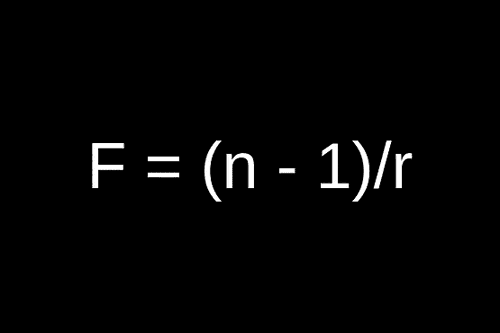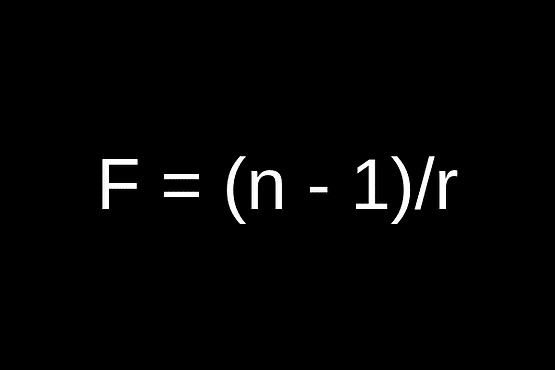Why are spectacle lens materials named with numbers?
You may have heard lenses referred to as 1.5, or 1.6 and so on, but what does that mean?
In short, it is a description. The number is referred to as the lens’ refractive index and is a measure of how much the lens ‘bends light’ or more scientifically – refracts. The larger the number, the more the lens refracts light. This means that a lens of a higher index can reproduce the same focal power as one of a lower index, but with shallower curves. This in turn means that the lens will be thinner.

Great, so we know that the larger the number, the thinner the lenses. But are these numbers just plucked out of the air, or do they have some kind of physical meaning?
The refractive index is defined as:
n = c/v
Where ‘n’ is the refractive index, ‘c’ is the speed of light in a vacuum and ‘v’ is the speed of light in the lens (strictly speaking it’s the phase velocity, but that’s a technicality that we need not concern ourselves with here).
This means that for a lens of index 1.5, that light travels 1.5x faster in a vacuum, than in the lens. Whilst that may be a mild curiosity, there is more information that we can glean from these numbers. For example, we may use the relation.
F = (n – 1)/r
Which tells us that the focal power ‘F’ is equal to the refractive index less ‘1’, divided by the radius of the lens ‘r’. If we imagine that a lens is what we get by cutting a thin slice off a ball, then ‘r’ is the radius of that ball (of course we are making some simplifications here).
Using this relationship, we can say that a +10.00D lens of refractive index 1.74 has the appearance of a +6.75D (ish) lens of refractive index 1.5.
So, high index lenses mean that the greater your prescription, the greater the saving in lens thickness. There are however some other considerations. High index lenses are generally denser, so even though there is physically less lens substance, there may be no saving in weight.
In addition, spectacle lenses exhibit a property called constringence. This means that the more your eyes move away from the centre of your lenses, the greater the tendency of the lens to split light up into its constituents. This is referred to as transverse chromatic aberration and we observe it as coloured fringes. Generally, the higher the refractive index of the lenses, the more obvious the transverse chromatic aberration is, due to the constringence.
Thus as high index lenses are generally more cosmetic and thinner than their lower index counterparts, it is always worth discussing your lens requirements in practice so that we can find the most suitable solution to meet your requirements.
Related articles





